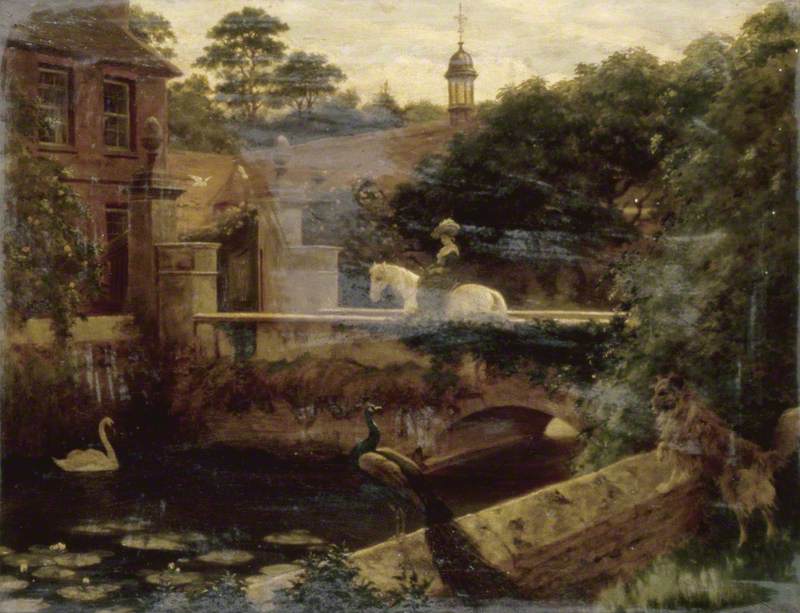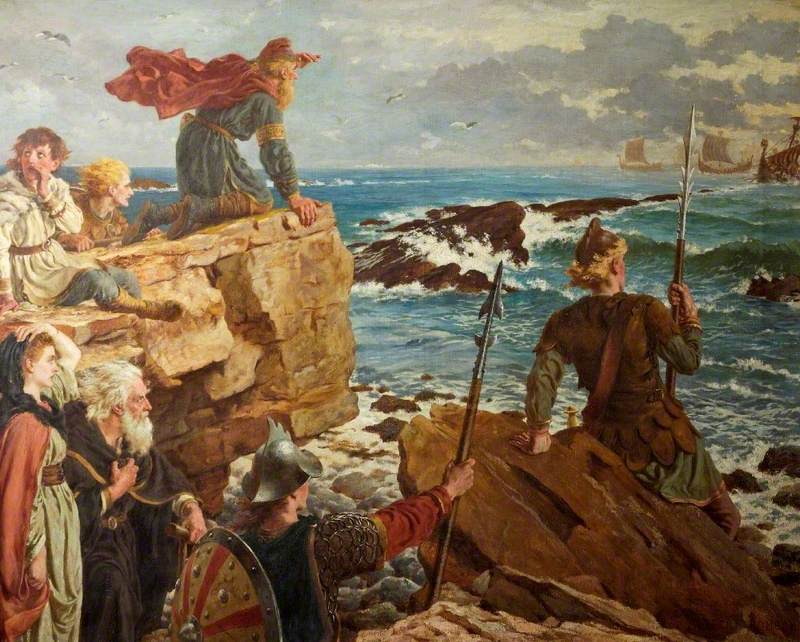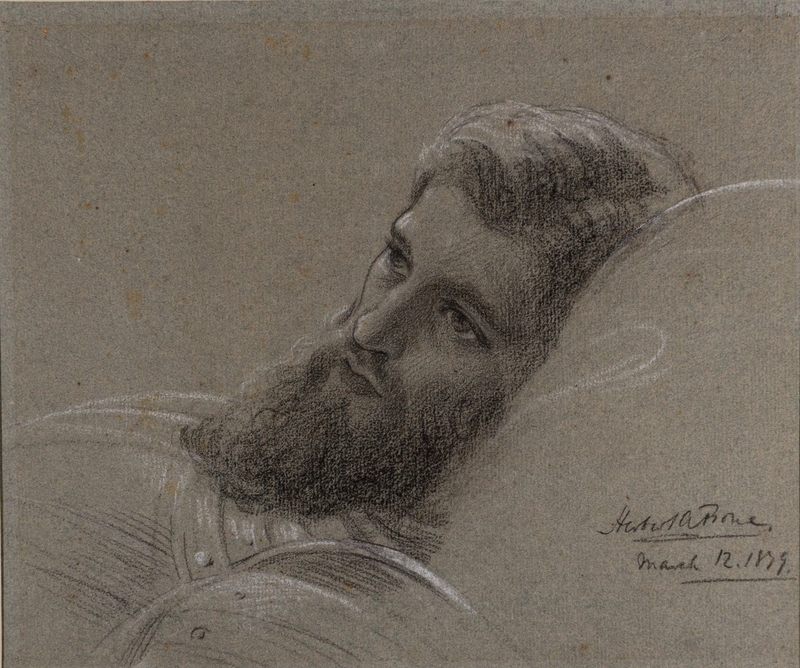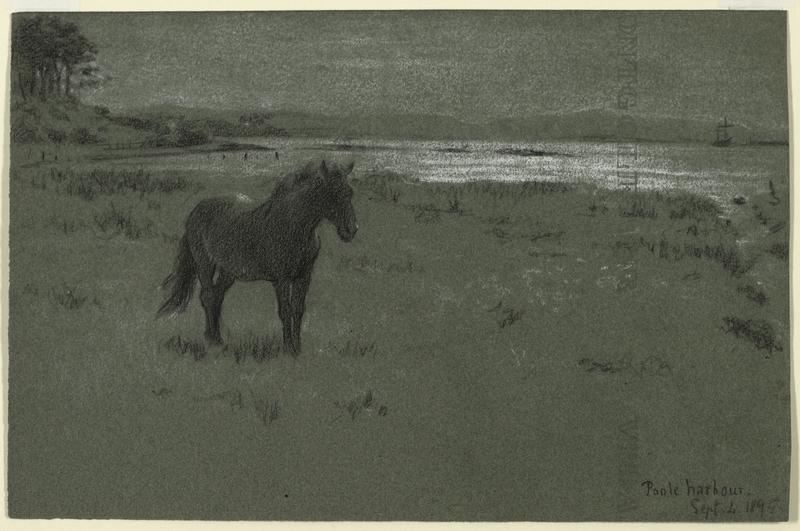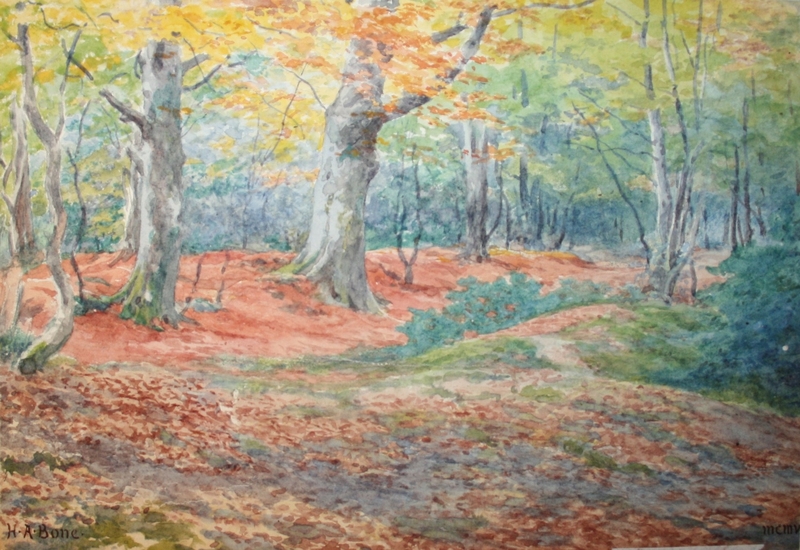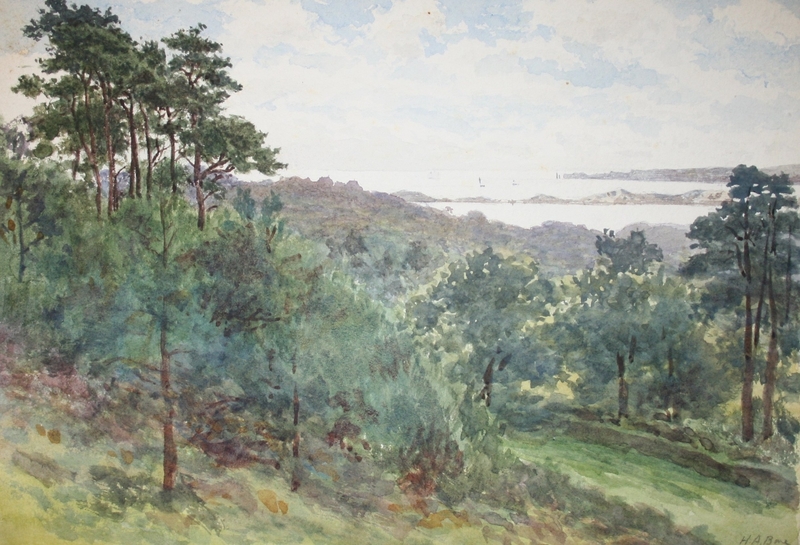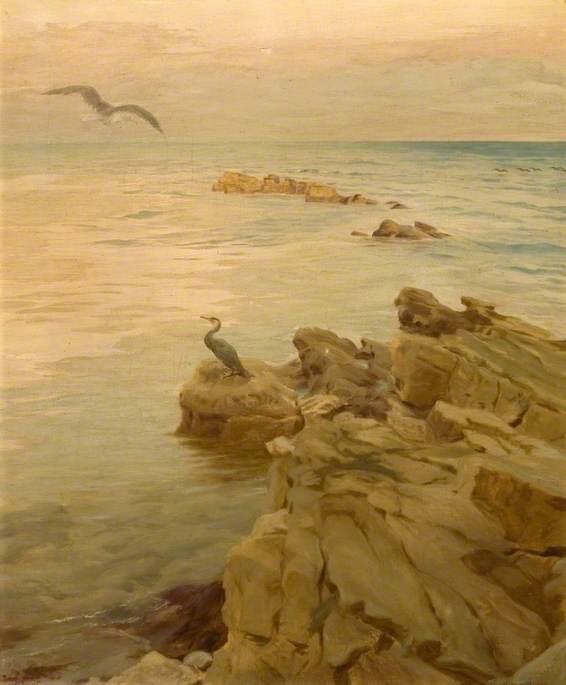
Herbert Arthur Bone [also known as Herbert A. Bone and as Herbert Bone] was born in Camberwell, Surrey [now London], England on 2 September 1853 and studied at Lambeth School of Art. While a student he worked as a designer and painter at the local factory of the ceramics manufacturer Doulton. He left Lambeth School of Art in 1871 and in January 1872 enrolled in the School of Painting at the Royal Academy Schools in London where he won medals for drawing in 1873 and 1875. In 1878 he also won the newly established Armitage Prize for the best figure picture on a set subject from the Bible, ancient history, or mythology. After graduating from the RA in 1878 he spent a period of study at the Académie des Beaux-Arts in Antwerp. Following his return to England he embarked on a career as a painter and designer of ceramics, glass, stencils and tapestries.
After leaving Windsor, Bone taught art at the Crystal Palace School of Art in Sydenham.
Bone exhibited at the Royal Academy in London between 1879 and 1899. His work was also shown at the Royal Society of British Artists, the Royal Society of Oil Painters, and the Royal Institute of Painters in Water Colours in London; the Walker Art Gallery in Liverpool, the Royal Society of Artists in Birmingham, and at the Manchester City Art Gallery. He was elected a member of the Art Workers Guild in 1887 and was a member of the Arts & Crafts Exhibition Society with whom he also exhibited.
'The Pilgrim's Way', a stencilled frieze by him is illustrated in 'The Studio Yearbook of Decorative Art' 1909 (p.42).
Bone's address was given as 34 De Crespigny Park, Denmark Hill, London in 1876; 296 King's Road, Chelsea, London in 1883; 11 Rupert Road, Bedford Park, London in 1884 and 1892; Woodcroft, Alleyn Park, Dulwich, London and 1895 and 1911; and 48 Alleyn Park, Dulwich, London in 1919 and 1931. He died in London on 31 October 1931.
Text source: Arts + Architecture Profiles from Art History Research net (AHRnet) https://www.arthistoryresearch.net/
